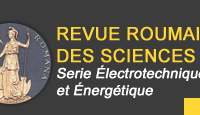Paper title: COMPARATIVE STUDY BETWEEN TWO SENSORLESS METHODS FOR DIRECT POWER CONTROL OF DOUBLY FED INDUCTION GENERATOR
Author(s): ALI IZANLO, S. ASGHAR GHOLAMIAN, MOHAMMAD VERIJ KAZEMI,
Abstract: In this paper two control system proposed and then applied for a DFIG by variable speed wind turbine under unbalanced grid
voltage. In this control system the rotor position sensor is eliminated by using two methods for detecting the rotor position. Also,
presents an analysis and comparison study of two sensorless methods for the detection of rotor position of the doubly fed induction
generator (DFIG). These two methods were compared with each other under different condition i.e. various unbalanced voltage,
super-synchronous, sub-synchronous and variable speed and in the end, Advantage of any of the methods is expressed. The two
methods studied in this paper for rotor position estimation, are rotor current model reference adaptive system (MRAS) and using of a
sensorless strategy. Both methods obtained required information for rotor position estimation by measuring stator voltage, stator and
rotor current. Till now, has not been used from sensorless algorithms and MRAS observer for DFIGs control when the network voltage
is unbalanced. Also, during network unbalance, three selectable control targets are identified for the rotor side converter (RSC), i.e.
obtaining sinusoidal and symmetrical stator currents, mitigation of active and reactive powers ripples and the cancellation of
electromagnetic torque oscillations. A case study on a typical 2 MW DFIG based wind turbine demonstrating the effectiveness of
the proposed control methods is verified with simulations in Matlab/Simulink.
Keywords: Doubly fed induction generator (DFIG), Direct power control (DPC), Unbalanced voltage, Rotor position estimation Year: 2017 | Tome: 62 | Issue: 4 | Pp.: 358-364
Full text : PDF (544 KB) |



